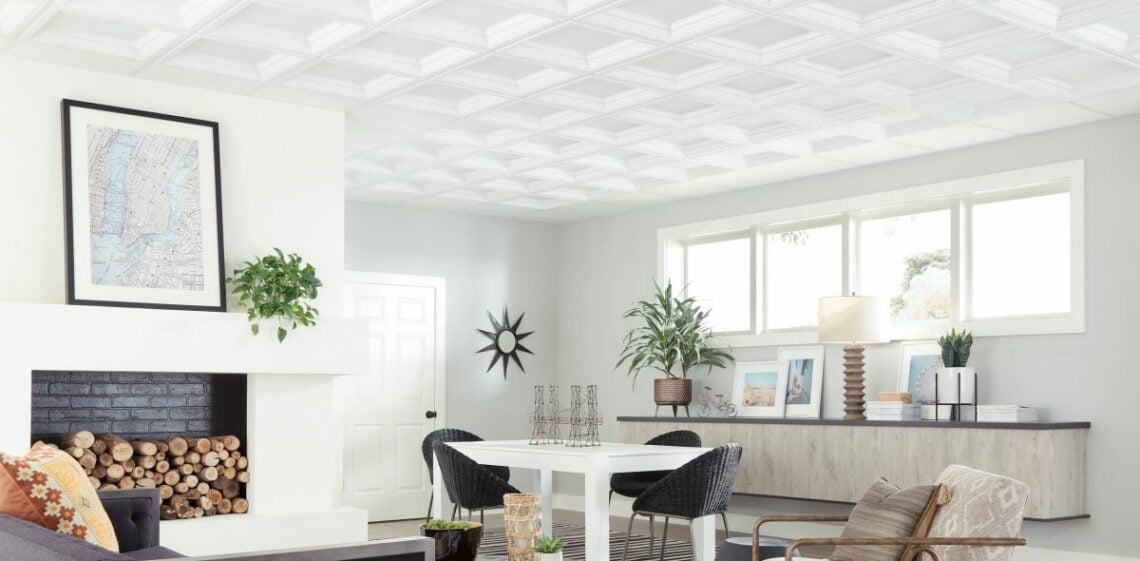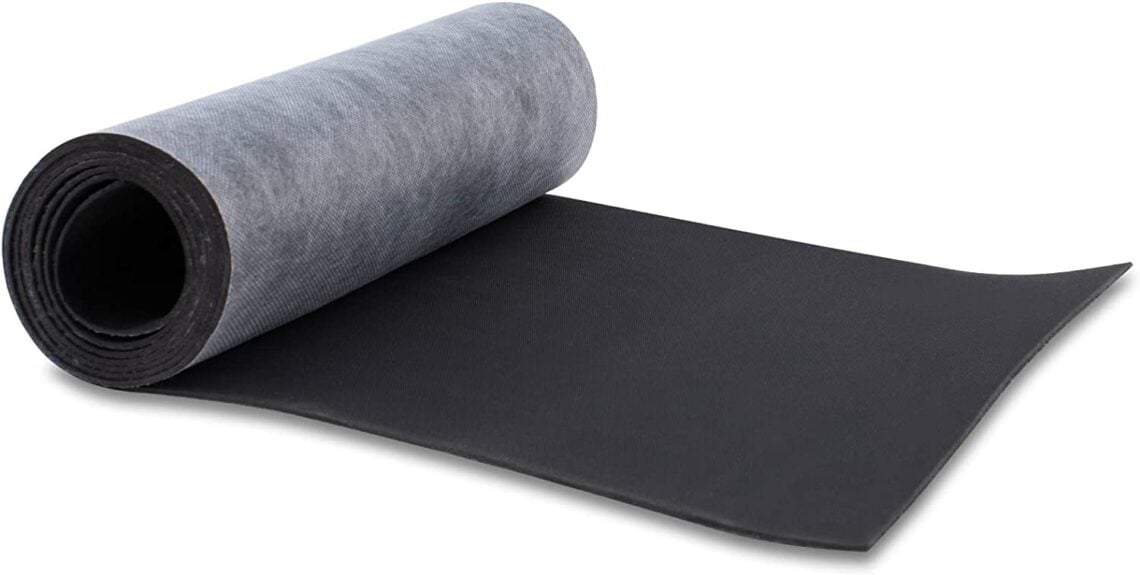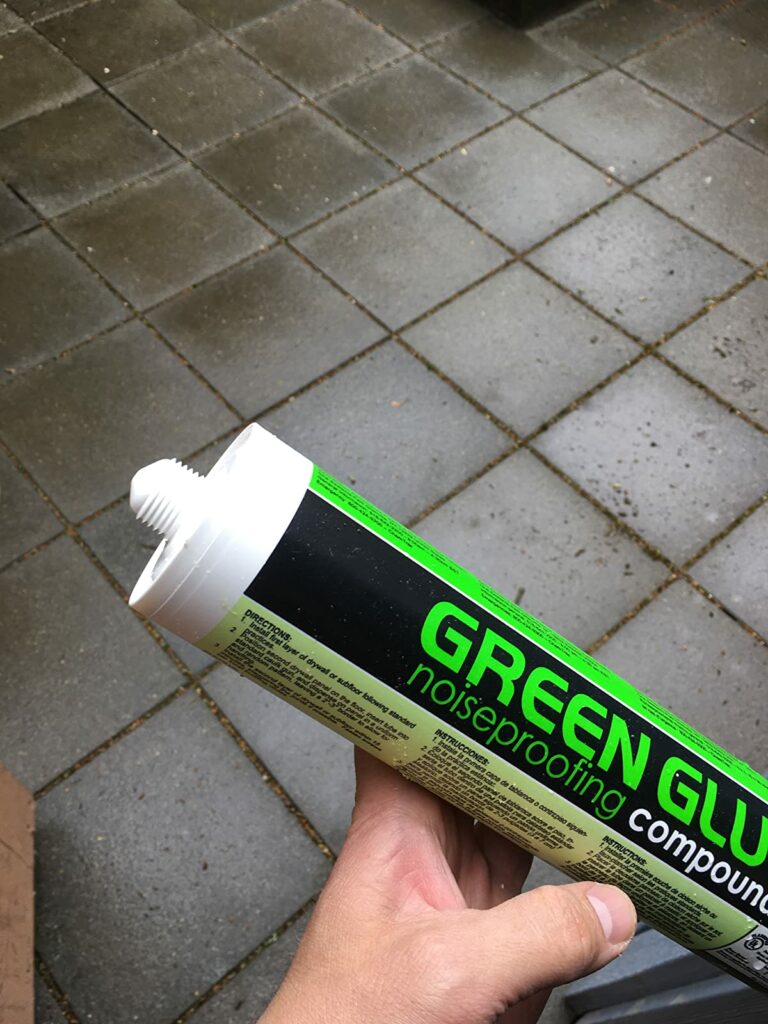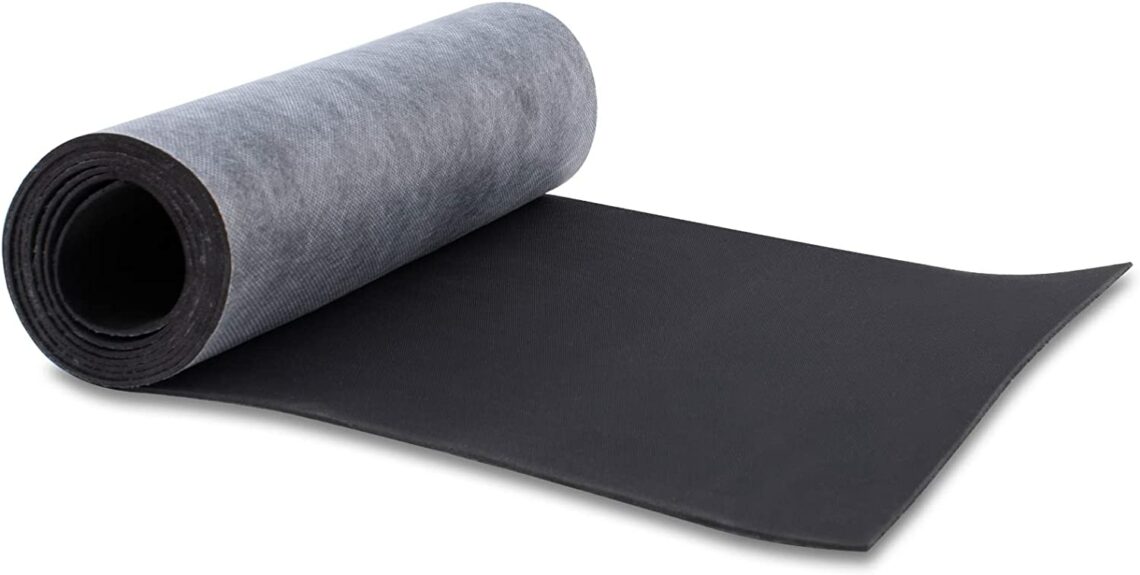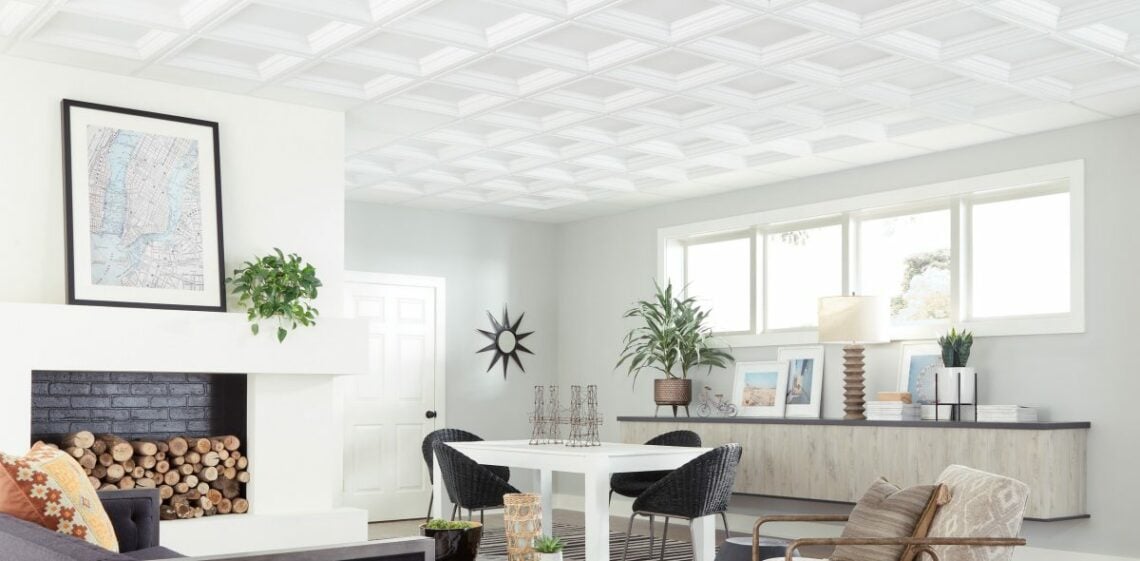The best approach to soundproof basement ceilings is by adding mass. To stop the noise, you must use a resilient channel to disconnect the ceiling from the floor joists.
Basements can be used as a home office or a comfortable cot. Some people turn their basements into libraries or home music studios. As such, it needs to be a quiet space.
You don’t want to deal with noise, whether you’re building a quiet area so you can binge-watch your favorite series or adding bedrooms to suit your expanding family.
Here are our favorite soundproof basement ceiling techniques. Follow our guide for a quiet basement.
How to Soundproof Basement Ceilings
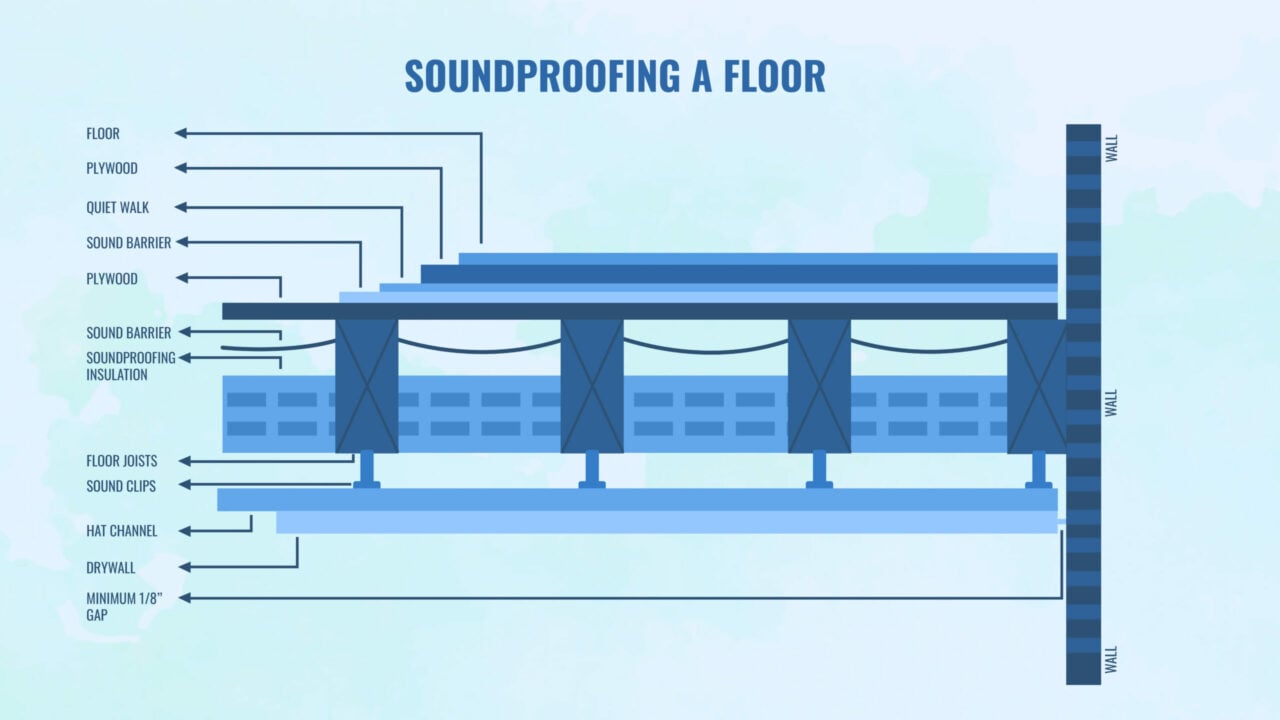
Although soundproofing the ceiling might seem daunting, it’s not as challenging as many other projects.
Soundproofing a basement ceiling is simpler because the other surfaces in the basement aren’t connected to any other portions of the house.
One of those small factors that can make or break your newly discovered square footage is understanding how to soundproof a basement ceiling to absorb sound waves.
The presence of sound in a basement is mostly due to several factors. Changes might happen quickly by focusing on particular problems.
Before you soundproof a basement ceiling, it’s important to check whether your basement ceiling is finished or not. It’s harder to install soundproof insulation to finished basement ceilings.
We’ll show you how to soundproof a finished ceiling and an unfinished basement ceiling soundproofing.
For more information, check out our article on how to do ceiling soundproofing.
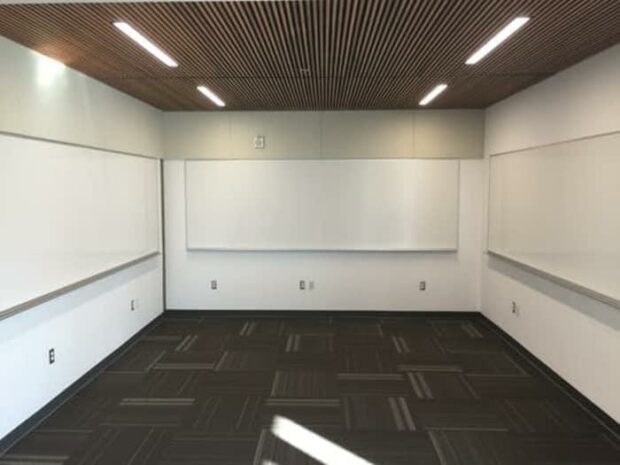
How to Soundproof an Exposed Basement Ceiling
Soundproofing methods for an unfinished basement ceiling are much easier than a finished ceiling. Since the ceiling is exposed, it’s easier to stuff sound absorption materials inside.
The exposed joists can easily reduce noise thru these soundproofing projects. Noise transmission is most basement ceilings’ weakness.
1. Stuff Insulation Into the Ceiling Joists to Absorb Sound
You should be able to see empty wooden joists when you gaze up at your basement if the ceiling’s unfinished.
Before you do anything else, you’ll need to fill the space to stop sound from traveling through the floor above. But what if, during building, your ceiling was hastily covered?
In that situation, you’ll need to check whether the surface is packed with acoustic insulation before moving on.
You will need to drill into the drywall to determine whether the space above the ceiling is full. Otherwise, you’ll have to knock it down and start over.
Continue putting the insulation to reduce sound transfer. The simplest type of insulation to insert is acoustic panels; you have to push it up, and the joists will support it.
You might need to install a vapor barrier over everything after that is finished before continuing. To learn more, read our article about the ceiling soundproofing project and how to properly do soundproof insulation.
2. Install Resilient Channels Across the Ceiling Joist Cavities
Resilient channels are put in after insulation is pushed into the basement’s ceiling at a 90-degree angle to the joists to absorb noise and sound.
The metal railings will act as a flexible barrier between the drywall you’ll hang next and the timber beams that form the structure of your home.
Effectively separating the two surfaces will stop impact sounds from traveling between them. Resilient channels should be installed six inches from the wall and over ceiling joists.
The distance between the next channel and the one before should be roughly sixteen inches. However, the instructions for most products will give these kinds of characteristics.
Instead of using resilient channels, you may employ sound isolation clips and hat channels to create greater noise transfer separation between your walls and joists.
3. Screw On Your Soundproof Drywall Sheets
Immediately after establishing your network of robust channels, start installing your drywall or other soundproofing materials.
You merely need to complete the installation procedure at this point. However, do yourself a favor and rent a drywall lift for the day or week.
These instruments will support the plasterboard sheets as you screw them into the metal channels.
Keep in mind that only the resilient channels should receive your screws! They should not be attached in any way to the joists. The decoupling procedure would not work otherwise.
Throughout the process, you’ll also need to consider ventilation and lighting. Therefore, when installing the materials, you will need to make cuts around vents and electrical components.
4. Add Another Layer of Drywall Smeared With Green Glue
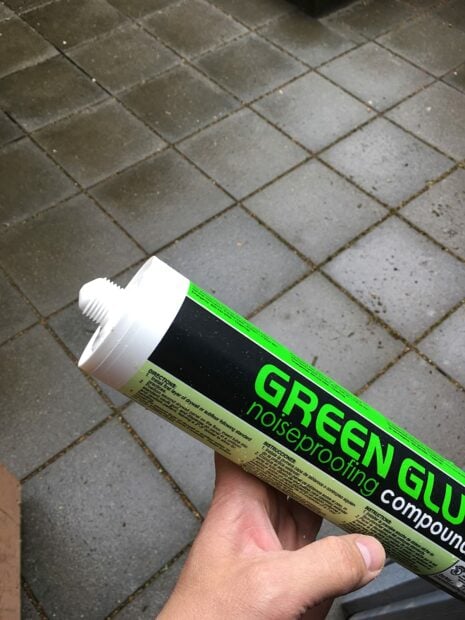
You’ve probably heard of Green Glue if you’ve looked into other soundproofing methods. It involves sandwiching a layer of Green Glue between two layers of drywall.
As long as you have that drywall lift, it should be easy to add the acoustic panels. Green Glue is an acoustic insulation sealant that converts sound waves into heat energy.
However, you must sandwich it between two solid surfaces. Lift the sheet of drywall that has the Green Glue on it to the drywall that is already in place and hold it there.
Be prepared to work on this stage for several days if you only rented one drywall lift. On the other hand, feel free to skip it if you don’t have that much free time.
5. Plug the Gaps With Acoustic Caulk
You must fill in the spaces between the individual drywall sheets on your ceiling, whether there are two layers or just one, before adding the final touches.
After all, airborne noise will still be able to enter and exit your basement if those cracks remain between the drywall on the ceiling and the walls.
Get an acoustic sealant tube and a caulking gun; it’s simple. Between each piece of drywall and along the seams where the wall and ceiling meet.
6. Add the Finishing Touches
Your ceiling will be prepared for the finishing touches you must apply by smoothing the caulk. That includes painting it and installing light fixtures, coverings, and vents.
Ways to Soundproof a Basement Ceiling That Is Finished
After discussing techniques for insulating your basement ceiling from the inside, let’s consider alternatives for your finished basement ceiling.
If you have finished basements, instead of opening your ceiling, you can install soundproofing materials directly into your ceiling instead.
Here, you have a choice between two strategies for your soundproofing project. Either add materials to the ceiling from below or address the issue from above.
1. Lay Down Thick Carpeting on the Floor Above
You probably have access to the level above if you’re trying to soundproof a basement ceiling. Insulating the area above your basement ceiling would be the best action for this job.
Putting down some carpets and rugs ought to solve the problem affordably. Remember that you’ll need to cover areas in the rooms above the basement with carpeting.
In any case, thin rugs won’t do; instead, opt for plush, thick carpets. Alternatively, you might layer carpets or utilize underlays made of various materials (such as exercise mats).
This advice could stop impact noise from traveling through the floor and airborne noise if you choose rubber or vinyl as the carpet underlay.
2. Rearrange the Furniture Above
There is another technique to modify the sound transmission to the basement ceiling. The furniture should be rearranged so that the largest items are placed over the weak points.
Of course, you’ll need to identify those weak spots before moving furniture like couches, bookcases, and tables.
Analyze the noise entering the room by staying in the basement for a few days. Place a marker wherever the sound is heard, then determine which room corresponds to each.
Once you have determined the noise source, go upstairs and look for items you can utilize. Then, all that will be required is to shove heavy furniture over the weak point.
3. Use Mass Loaded Vinyl as Flooring Material or to Thicken the Ceiling
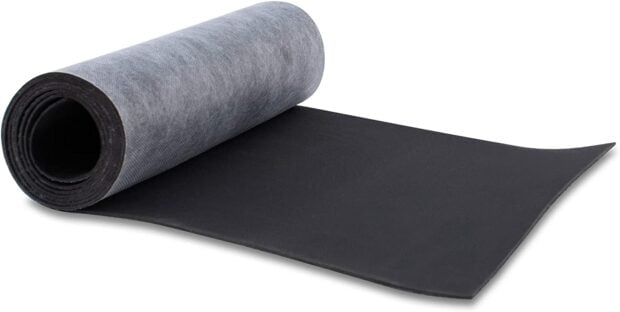
Mass-loaded vinyl can be used in almost any place. Here, it is very useful as it absorbs sound waves from your main Floor. It is one of the best sound-absorbing materials on the market.
Mass-loaded vinyl is a substance that is highly solid but flexible. You could use it as a carpet underlay on the levels above the basement because it flattens out quickly.
You could also nail or staple it if you’re intent on attaching it to the ceiling from below without removing the existing drywall.
4. Install a Drop Ceiling With Acoustic Foam Panels
Acoustic panels are another method to soundproof a basement ceiling. Adding acoustic foam panels under a drop ceiling can help hide mass-loaded vinyl.
Sliding the tiles should be pretty simple once the metal channels have been installed. The procedure should still function even if the area above the tiles is empty, which is the best part.
Drop ceilings should stop both airborne and impact noise. Yes, even if you stick acoustic tiles right on top of the existing drywall, they should still have an impact.
They should decrease the basement’s sound transmission because they are porous. Even though it might not completely exclude noise, it will improve the acoustics.
5. Hang Up Stylish Acoustic Fabric Panels
Instead of standard foam tiles, you might choose acoustic fabric panels to give a room a more upscale appearance.
The effectiveness of the two product types isn’t necessarily dependent on one another; it ultimately depends on how thick the individual panels are.
6. Use Styrofoam Panels or Tiles to Soundproof a Basement Ceiling Cheaply
Instead of the methods mentioned above, you might use styrofoam to soundproof your ceiling cheap. Although it won’t be as effective, it will still reduce airborne sounds.
Furthermore, if you wanted to cover MLV, styrofoam would be the ideal material to utilize. Furthermore, you wouldn’t need to use standard foam panels.
Many businesses manufacture Styrofoam ceiling tiles, which are frequently safe to paint over. The price difference is huge.
Is It Worth It to Soundproof a Basement Ceiling?
One should never assume they will always have a basement. Having a place of any kind underneath the house is a luxury many homeowners worldwide enviously desire.
Since there isn’t much soil beneath a residence before it hits the water table when it is close to a coastline, they are almost nonexistent.
It’s a nice option, but what a person does with that room might vary tremendously. Although it can be a headache, soundproofing a basement ceiling can help you utilize the space in new ways.
Some people may utilize it as storage since they’ve never been satisfied with how they’ve used that area. They can now clearly see how the basement could be transformed.
The basement ceiling also has a two-way street. In addition to preventing noise from distracting basement residents, soundproofing also lessens sound’s ability to travel upward.
If a basement isn’t being used, it might not seem like a major worry, but noises that are heard in the dining room, living room, and other areas become a problem.
If you want to know more about soundproofing any room, not just the basement, check out our article on how to soundproof a room.
What Are the Two Types of Noises to Consider When Soundproofing?
The two primary categories of noise pollution are the most logical place to start. Since the first level of a house is typically the busiest, you’ll find both in the basement.
Airborne noise and impact noise are the two categories of noise pollution.
Any sound can be categorized into one of these two groups. Understanding how to categorize them will enable you to choose the most practical options.
Airborne Noises
Airborne noises are self-explanatory: sound waves travel through the air after leaving their source. When the sound waves make contact, some energy passes through them.
The majority of the noises we hear daily are classed as airborne noise. Surprisingly, soundproofing a basement ceiling might not be as much of an issue.
The ground floor rarely has noticeable cracks that let sounds enter the basement. Therefore, the only location you’ll need to protect our basement doors. And basement walls.
Impact Noise
Gas isn’t the best medium for transmitting sound. When passing through solids and liquids, sound waves move much more quickly.
That is precisely why impact noise is so challenging to eliminate unless you are familiar with decoupling. Simply put, impact noise moves through a building’s structure.
Therefore, if you have a subwoofer on the ground, the bass vibrations may go directly through the flooring to the ceiling below.
We can stop noise transmission if we minimize or remove the point of contact between two structural components.
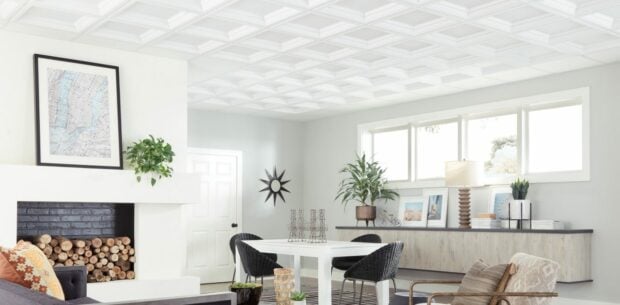
Frequently Asked Questions (FAQs)
Do you still have questions about how to soundproof a basement ceiling? Here are our most frequently asked questions about the matter.
How Do I Reduce Sound Waves Coming From Upstairs?
Footsteps
The sound of people walking above you is perhaps the most frequent sound you’ll encounter in most basements. Depending on the type of noise, your sound barrier should adapt to it.
Every time a foot touches the ground, the impact can produce sounds, but it can also induce movement in the materials that make up the floor.
You can combat this kind of noise by decoupling materials and boosting the density and mass of the barrier separating the two layers.
Ducts and Pipes
The pipes and ducts above your head will be the second major source of basement noise. When air or water travels through them, they emit sounds.
These noises aren’t particularly loud, but they add to the other sounds of living on two floors. It’s essential to care for the pipes and ducts while soundproofing a basement ceiling.
Conversations
Finally, conversations, televisions, and radios being played can all produce airborne noises. Although some airborne sounds will travel through the floor directly, this is not the only way.
Open stairwells allow sound waves to move freely from one floor to the next. If you want to block them out, you’ll have to be a little inventive with your soundproofing strategy.
How Do I Make My Basement Ceiling Quieter?
Sound insulation starts by looking at what your basement ceiling’s made of.
There are just a few options to insulate a drywall ceiling from above without removing anything, making it difficult.
A drop ceiling is considerably better in this situation because soundproofing material can easily be installed after it has been removed.
A ceiling in an unfinished basement works best because it allows for easy installation. Since everything’s exposed, there’s nothing to work around, and the process is easy.
What Is the Best Insulation for Soundproofing Ceilings in Basements?
Making your basement a more comfortable living space requires using the correct insulation for the ceiling.
Adding cheap pink fiberglass insulation would be preferable to having no insulation because many folks won’t even have insulation between the basement and the main floor!
For more information, check out our article on the best insulation for your ceiling!
Mineral Wool Insulation
Nowadays, a lot of individuals choose mineral wool over fiberglass. Compared to the alternatives, it is denser, doesn’t sag nearly as much, and holds its shape better.
It is a method of adding mass to aid in sound absorption and lessen vibration noise. Choose the panel or batten that best meets your needs; they are available.
Fiberglass Insulation
Even though mineral wool insulation is a popular option, fiberglass insulation is still available for mass use.
They might be unable to stay in between the joists on their own because they are soft and fluffy when delivered in battens.
Although certain firm fiberglass panels perform a little bit better, the fact that it is inexpensive is why it is included on this list.
Fiberglass is the best option for people with a limited budget because it is more effective than nothing.
Foam Boards Insulation
A foam board functions similarly to a typical drywall layer in many aspects. It has a rather high soundproofing rating and does an excellent job decoupling the floor layers.
Some homeowners prefer this drywall substitute even though it’s pricey and difficult to find.
Conclusion
There are certain to be a few solutions with everything mentioned above that are ideal for a setup at home. Don’t be hesitant to test out several ideas to see what works.
Our #1 recommendation is to include MLV because it was made with sound blocking in mind. This makes for a functional and affordable configuration when coupled with insulation.
There are other possibilities, of course, if you’re ready to pay a little more. There is no assurance that everything will go smoothly because everybody’s home is slightly different.
We recommend starting small and progressing from there. The basement will quickly become a much more tranquil area to spend time in.



